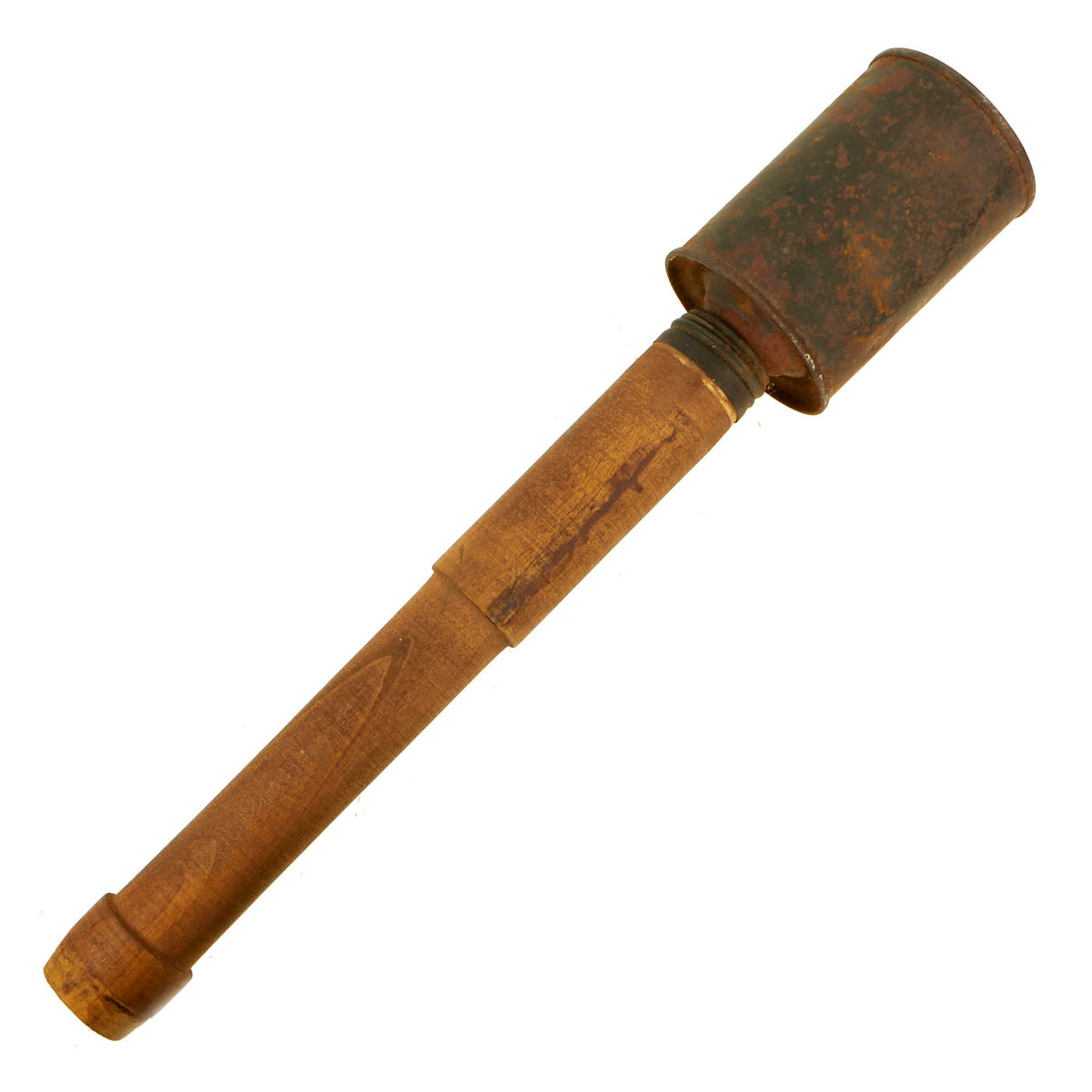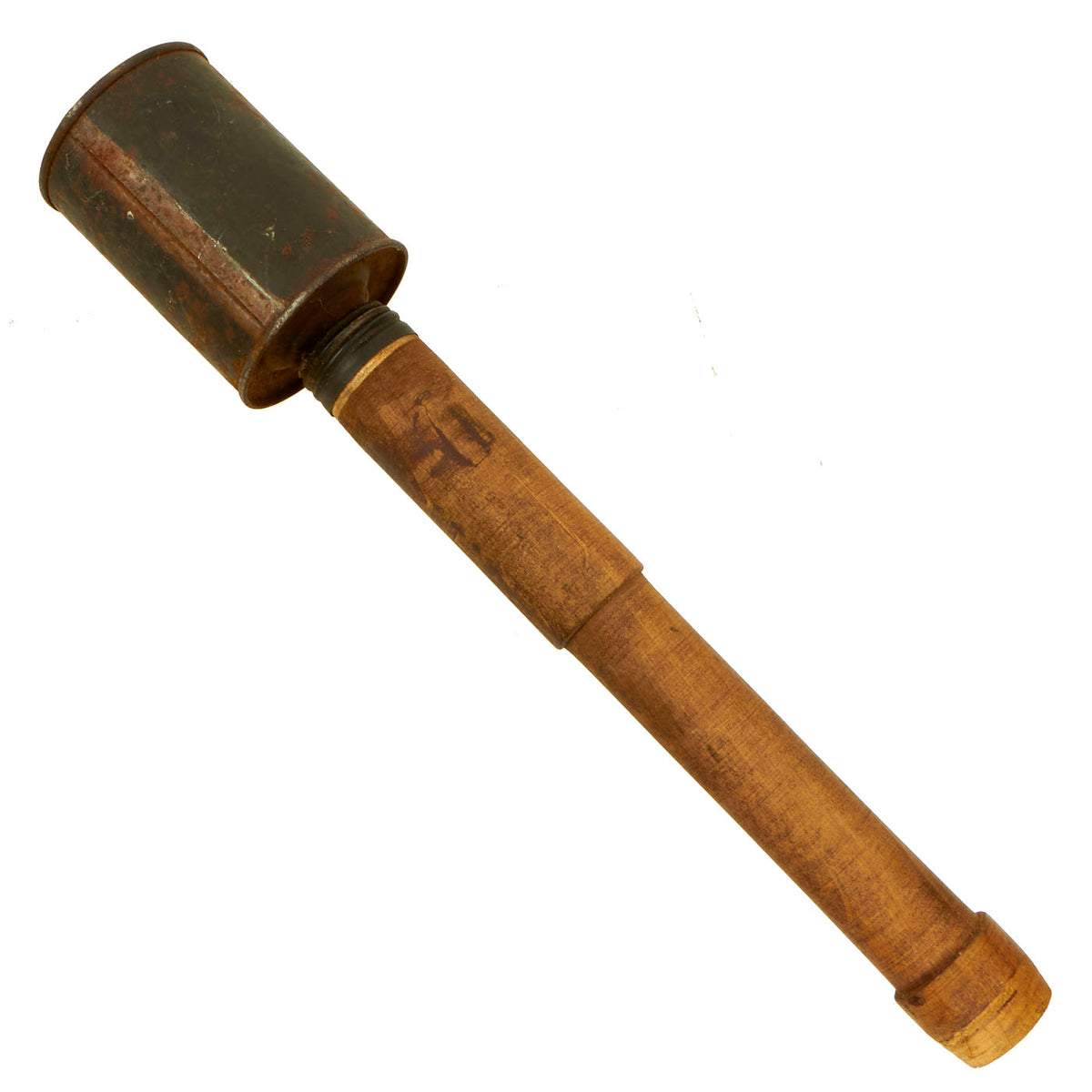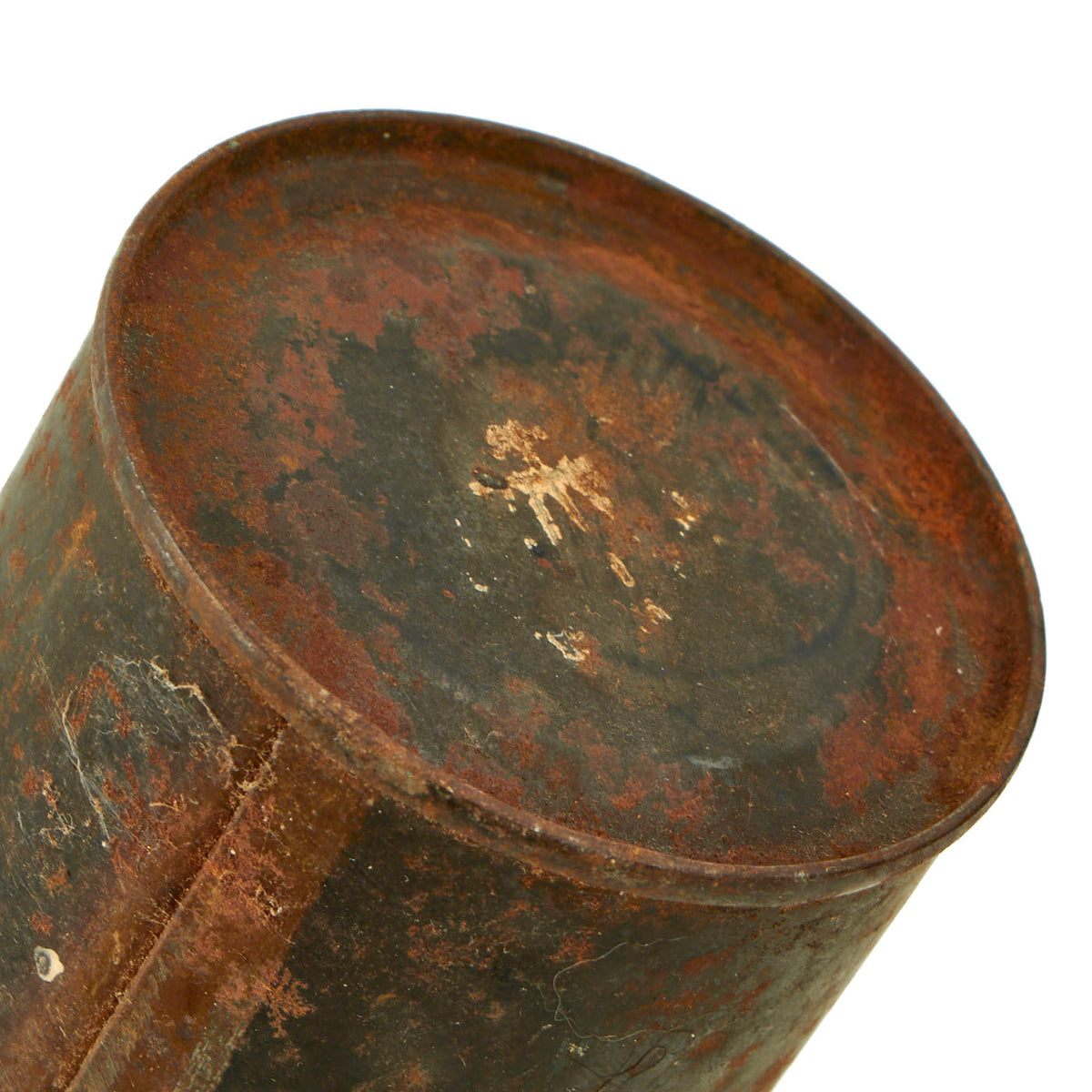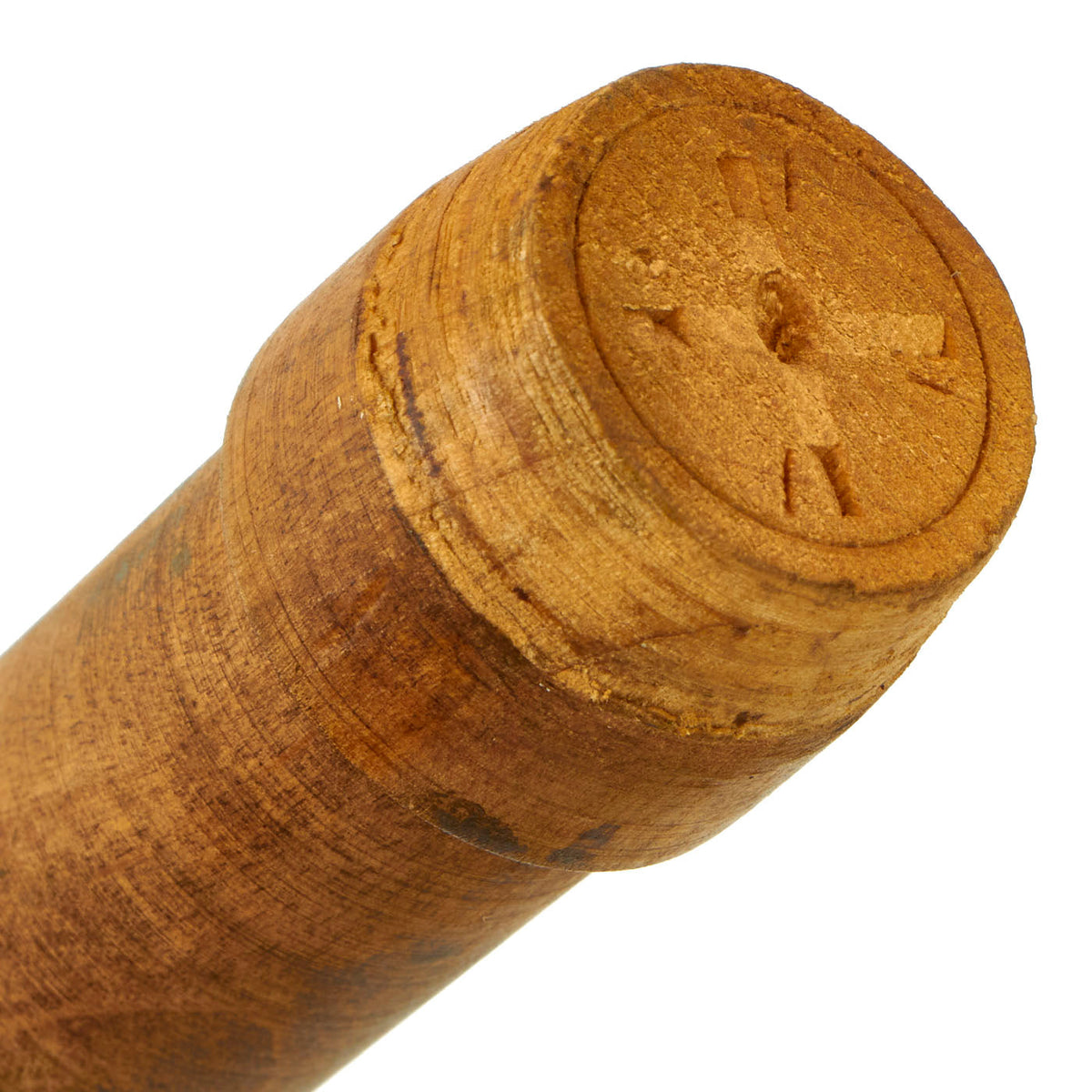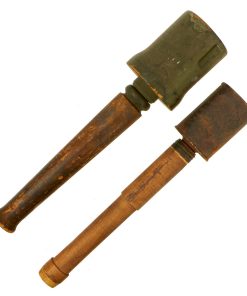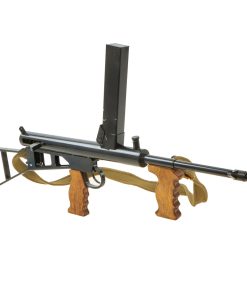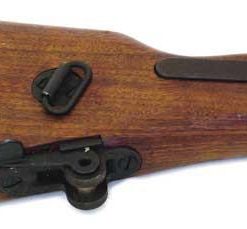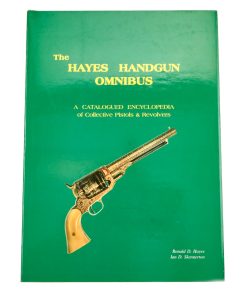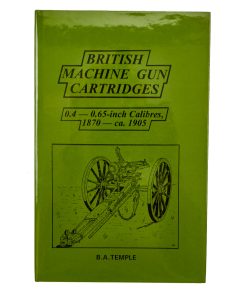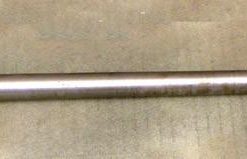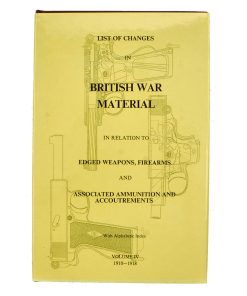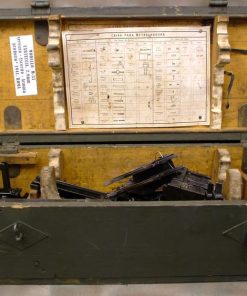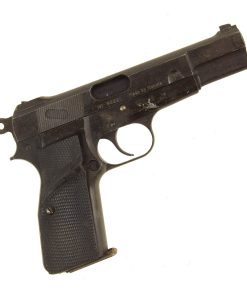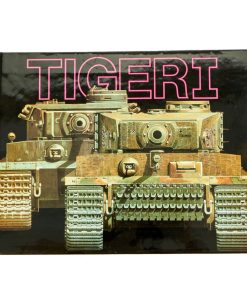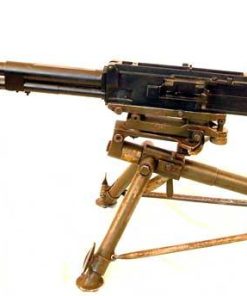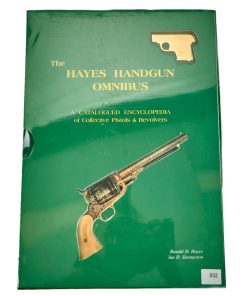Original German Pre-WWII Weimar Republic M24 Stielhandgranate Training Stick Grenade Lot – 2 Items Original Items
$ 295,00 $ 118,00
Original Items: Only One Lot of 2 Available. Upon the German Empire’s defeat at the conclusion of World War I, the total and complete collapse of industrial capability and military strength of Germany left many projects and ideas lost and forgotten for a number of years. When the newly created Weimar Republic progressively began to repair both the physical and economic devastation, a slow rebuilding of the armed forces was allowed under the limitations set by the allies.
These are training grenades and were never filled with any type of explosive content. They are inert examples and are in total compliance per the current BATF standards on inert ordnance. They are not available for export.
The Weimar Republic revived the Stielhandgranate, and created a new version in 1924, the “Model 1924 Stielhandgranate” (M24). While retaining the same explosive and fuse, the main distinction between the M24 and the original M15 is a slightly shorter charge head and the removal of a belt carry clip. Another change in the design was a lengthening of the wooden handle. The intent of these design alterations was simply for mobility; German soldiers could easily (and often did) tuck the grenade in behind their uniform’s belt, held tight and secure. Being slightly lighter, and smaller in thickness, this improved overall use.
Like most of the forces that took part in World War II, the Wehrmacht produced inert (not able to explode) versions of the standard-issue grenade, designed to aid recruits on how to properly throw and operate the weapon during training.
The grenades are in good condition with signs of good, honest use and wear. The larger of the two examples is solid wood while the other one has a metal “warhead” similar to the live versions of the M24.
Both come more than ready for display.
The Stielhandgranate (German for “stick hand grenade”) was a German hand grenade distinguished by its wooden handle. It was a standard grenade for the German Empire during World War I, and Germany’s Wehrmacht during World War II. Its distinctive appearance led to it being called a “stick grenade”, or “potato masher” in British Army slang, and it remains one of the most easily recognized infantry weapons of the 20th century.
Germany entered World War I with a single grenade type: a heavy 750-gram (26 oz) ball-shaped fragmentation grenade (Kugelhandgranate) for use only by pioneers in attacking fortifications. It was too heavy for regular battlefield use by untrained troops and not suitable for mass production. This left Germany without a standard-issue grenade and improvised designs similar to those of the British were used until a proper grenade could be supplied.
Germany introduced the “stick grenade” in 1915, the second year of the conflict. Aside from its unusual appearance, the Stielhandgranate used a friction igniter system. This had been used in other German grenades, but was uncommon internationally.
During World War I, the Stielhandgranate, under the name M1915 (Model 1915), competed technologically with the British standard-issue Mills bomb series. The first Mills bomb – the grenade No. 5 Mk. 1 – was introduced the same year as the German Model 1915, but due to manufacturing delays it was not widely distributed into general service until 1916. Thus, there was a small period of time where German troops had large supplies of new Model 1915 grenades, while their British opponents only had a small number.
As World War I progressed, the Model 1915 Stielhandgranate was improved with various changes. These variants received designations such as the Model 1916 and the Model 1917.
Model 1924 (M24)
Upon the German Empire’s defeat at the conclusion of World War I, the collapse of industrial capability and military strength of Germany left many projects and ideas forgotten for years. When the newly created Weimar Republic progressively began to repair both the physical and economic devastation, a slow rebuilding of the armed forces was allowed under the limitations set by the allies.
The Weimar Republic revived the Stielhandgranate, and created a new version in 1924, the “Model 1924 Stielhandgranate” (M24). While retaining the same explosive and fuse, the main distinction between the M24 and the original M15 is a slightly shorter charge head and the removal of a belt carry clip. Another change in the design was a lengthening of the wooden handle. The intent of these design alterations was simply for mobility; German soldiers could easily (and often did) tuck the grenade in behind their uniform’s belt, held tight and secure. Being slightly lighter, and smaller in thickness, this improved overall use.
The M24 is well known as the standard hand grenade of the armed forces of the Wehrmacht during World War II. Adapting to the rapidly changing field of modern warfare, German soldiers would carry the M24 directly in front, allowing quick and easy access. However, in the later years of the war it was often advised to carry them in a different manner, as it was very likely any sort of explosion or heat could light the fuse from the grenade on the belt, resulting in unnecessary casualties.
The Model 24 Stielhandgranate was stored in specially designed crates during transport, which could carry up to 15 individual grenades. As a safety precaution, units of the Wehrmacht were advised to only insert the actual fuse assemblies when about to go into combat. Later in the war, however, many soldiers of the Wehrmacht would always have their weapons ready, due to the fierceness seen in the Soviet Red Army in the east and the progressive advance of the Allies on the Western Front. During production, a reminder was stenciled on each explosive charge: Vor Gebrauch Sprengkapsel einsetzen (“Before use insert detonator”).
The Model 1924 was rather ineffective by itself at damaging or disabling an enemy armored vehicle or destroying fortifications. It also lacked the shrapnel effect of most other grenades of the time. To overcome these faults, various German industries during World War II produced a number of variants that widened the utility and capability of the M24.
Fast Shipping with Professional Packaging
Thanks to our longstanding association with UPS FedEx DHL, and other major international carriers, we are able to provide a range of shipping options. Our warehouse staff is expertly trained and will wrap your products according to our exact and precise specifications. Prior to shipping, your goods will be thoroughly examined and securely secured. We ship to thousands clients each day across multiple countries. This shows how we're dedicated to be the largest retailer on the internet. Warehouses and distribution centres can be located throughout Europe as well as the USA.
Note: Orders with more than one item will be assigned a processing date depending on the item.
Before shipping before shipping, we'll conduct a thorough inspection of the items you have ordered. Today, the majority of orders will be delivered within 48 hours. The delivery time will be between 3-7 days.
Returns
The stock is dynamic and we cannot completely manage it because multiple stakeholders are involved, including our factory and warehouse. So the actual stock may alter at any time. It's possible that you may not receive your order once the order has been made.
Our policy is valid for a period of 30 days. If you don't receive the product within 30 days, we are not able to issue a refund or an exchange.
You can only return an item if it is unused and in the same state as the day you received it. You must have the item in its original packaging.
Related products
Uncategorized
Uncategorized
Uncategorized
Uncategorized
Uncategorized
Australian WWII Owen MK1 Machine Carbine SMG Custom Fabricated Replica with Sling Original Items
Uncategorized
Uncategorized
Uncategorized
Uncategorized
Uncategorized
Band of Brothers ORIGINAL GERMAN WWII Le. F.H. 18 10.5cm ARTILLERY PIECE Original Items
Uncategorized
Uncategorized
Uncategorized
Angolan Rebel 1970s era 60mm Inert Display Mortar from Angolan Civil War Original Items

